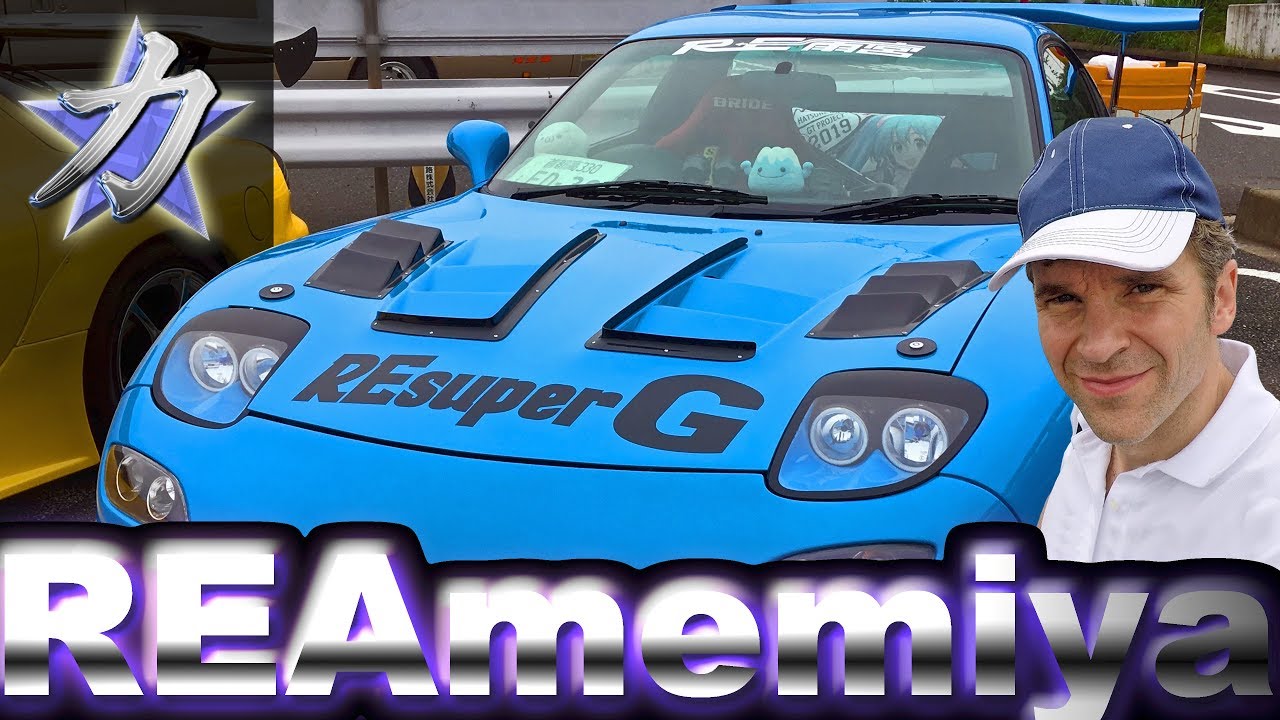
INSTAGRAM: https://www.instagram.com/rtcmanga_youtube
TWITTER: https://twitter.com/rtcmanga
FACEBOOK: https://www.facebook.com/rtcmanga
Mazda RX7 FD RE Amemiya in Tokyo. The Mazda RX7 (FD) is another sports car that became legendary-with the movie "Fast and the Furious". The Mazda RX7 (FD) in the video additionally got a tuning by RE Amemiya (RE雨宮) a famous rotary tuner in Japan. Therefore the car has a huge wing, after market bumpers and sills, vents in the hood and half open fenders. Since the Mazda RX7 (FD) is propelled by a rotary engine it was kind of unique on the market and not just any tuner could improve the car's performance, but RE Amemiya (RE雨宮) specialized on rotary engines and did the trick. The Mazda RX7 (FD) was build until 2002 and provides 280 hp to the rear wheels. Unfortunately we don't know how much more hp RE Amemiya (RE雨宮) could get out of this car.
My Merchandise at Teespring: (T-shirts and Sweaters!)
https://teespring.com/stores/rtcmanga
Please visit also my other sites:
rtcmanga WEB: http://www.rtcmanga.com
I-TUNES: https://itunes.apple.com/de/artist/chikara-blue/id424593608?ign-mpt=uo%3D4
PLEASE SUBSCRIBE!
http://www.youtube.com/user/rtcmanga?sub_confirmation=1
New Releases Every Friday
Music by Chikara Blue (available at iTunes!)
https://itunes.apple.com/de/artist/chikara-blue/id424593608?ign-mpt=uo%3D4
produced by: E. Martin Winzer
camera: E. Martin Winzer
music: Chikara Blue (available @ iTunes!)
more:
The third generation RX-7, FD (chassis code FD3S for Japan and JM1FD for the North America), featured an updated body design. The 13B-REW was the first-ever mass-produced sequential twin-turbocharger system to be exported from Japan,[14] boosting power to 255 PS (188 kW; 252 hp) in 1993 and finally 280 PS (206 kW; 276 hp) by the time production ended in Japan in 2002.
In Japan, sales were affected by this series' non-compliance with Japanese dimension regulations and Japanese buyers paid annual taxes for the car's non-compliant width. As the RX-7 was now considered an upper-level luxury sports car due to the increased width dimensions, Mazda also offered two smaller offerings, the Eunos Roadster, and the Eunos Presso hatchback.
The sequential twin turbocharging system, introduced in 1992, was extremely complex and was developed with the aid of Hitachi. It was previously used on the exclusive-to-Japan Cosmo JC Series. The system used two turbochargers, one to provide 10 psi (0.69 bar) of boost from 1,800 rpm. The second turbocharger activated in the upper half of the rpm range, during full throttle acceleration — at 4,000 rpm to maintain 10 psi (0.69 bar) until redline.[15] The changeover process occurred at 4,500 rpm, with a momentary dip in pressure to 8 psi (0.55 bar),[16] and provided semi-linear acceleration from a wide torque curve throughout the entire rev range under normal operation.
RE Amemiya Car Co Ltd (有限会社RE雨宮自動車, Yūgen Kaisha Āru-ī Amemiya Jidōsha) is an automotive tuning company from Tomisato, Chiba Prefecture, Japan founded by Isami Amemiya. Amemiya has made a name for himself tuning rotary engines since 1974 and has become a pioneer in tuning rotary-powered Mazdas. Thirty years later, first on the street and later in the Super GT series, Amemiya has left its mark in the tuning and motorsports worlds for rotaries.
Super GT RE Amemiya RX-7
In addition to competing in tuner events, in 1995 his company RE Amemiya (RE for Rotary Engine) began its participation as the lone rotary entry in the Super GT series with a 3-rotor 20B-powered Mazda RX-7 in the GT300 class.[1] This car was featured in Polyphony Digital's Gran Turismo 4, Gran Turismo 5 and Gran Turismo 6.
In 2006 the team was rewarded when they captured the class championship. The company also have competed in the D1 Grand Prix drifting series since 2004. For their second year of competition (2005), their driver Masao Suenaga, scored a sole victory at Fuji Speedway, but finished as runner up overall in the Grand Prix, losing by just one point to Yasuyuki Kazama.[citation needed] Mazda RX-7 RE Amemiya
























